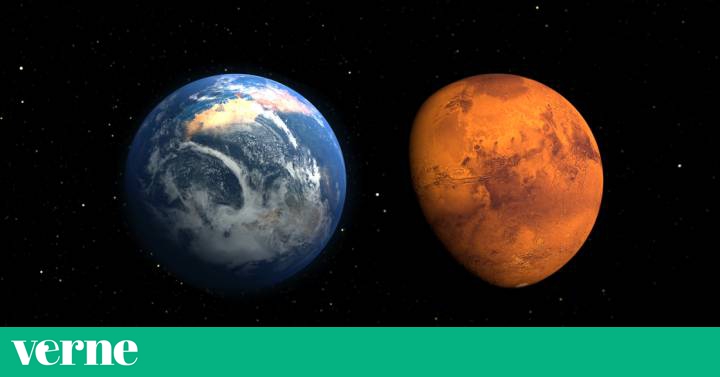
Like an adventure. This is how Mexican astrophysicist Julieta Fierro sees the recent arrival of the mission Perseverance on Mars, which has managed to document in real time the landing of the exploration vehicle that will look for vestiges of extinct life millions of years ago on the red planet.
The Mexican scientist has highlighted that this new NASA mission will reveal some hidden secrets that explain why Mars ended up being a desert planet, when about 4 billion years ago it had characteristics similar to those of Earth. “Mars was a world that had water, atmosphere, maybe life, but something happened to it and it was deserted,” says the astronomer at the conference. To the conquest of Mars, Organized by the National Autonomous University of Mexico (UNAM).
with Perseverance technological advances are also advancing that will allow space to be explored in a different way in the future. “It’s the first time a mission has taken a helicopter to another world to take photographs to detect which rocks are the most important and take them to Earth,” the scientist says with great enthusiasm.
According to Fierro and his colleagues, Dr. Antígona Segura and Luis Franco, it is possible that the extinction of life on Mars was due to strong changes in the greenhouse effect of the planet that ended the atmosphere. “It’s important to know what happened to Mars because we don’t want the same thing to happen to Earth,” says Dr. Fierro. “Mars had liquid water in the past, active volcanoes, polar caps with carbon dioxide and water,” says Dr. Antígona Segura, a doctor at the UNAM Institute of Nuclear Sciences. “Perseverance has captured images of a delta where there was an extinct river, “he added.” The new exploration vehicle has the ability to detect organic material and allow us to see possible microfossils, “he details.
Was there climate change on Mars?
Dr. Segura explains that Mars experienced climate change that affected the planet’s atmosphere. “The greenhouse effect was decreasing carbon dioxide and stopped heating the planet. It lost water and as it lost its atmosphere, the planet cooled,” says Antígona Segura. “Everything we discover is important because at some point we want to transform Mars. In 300 years it will be a habitable planet,” says Julieta Fierro. “We want to have missions so that they can survive there with greenhouses and sources to produce fuel in situ“, Adds the doctor.
Thanks to the plutonium-based energy source it carries, Perseverance you can continue to transmit images of what you will discover in the next 18 years. Julieta Fierro says that the Martian delta that has been seen these days, “is very similar to the desert of Coahuila”, where there was also a river millions of years ago. He also shared his impressions of the crater in which the vehicle landed: “On the edges of this crater are limestones, such as those found on the cliffs of the Earth produced by organized sailors.”
Dr. Fierro, enthusiastic about this new step for humanity, stressed the importance of basic science and the need for countries to continue investing in research despite the most difficult times of the pandemic. “This time we accompanied this great adventure and we are part of this great feat and we are able to take on these challenges even in the most difficult times,” he assured.
He also believes that the United Nations should meet again and decide whether the new discoveries belong to one country or to all of humanity. “The United Nations must discuss again who the products of the different stars are, it would be unfortunate if we said that the 4,000 extrasolar planets discovered are ours,” reflects Fierro.
Follow Verne Mexico on Facebook, Twitter and Instagram and don’t miss your daily ration of internet wonders.